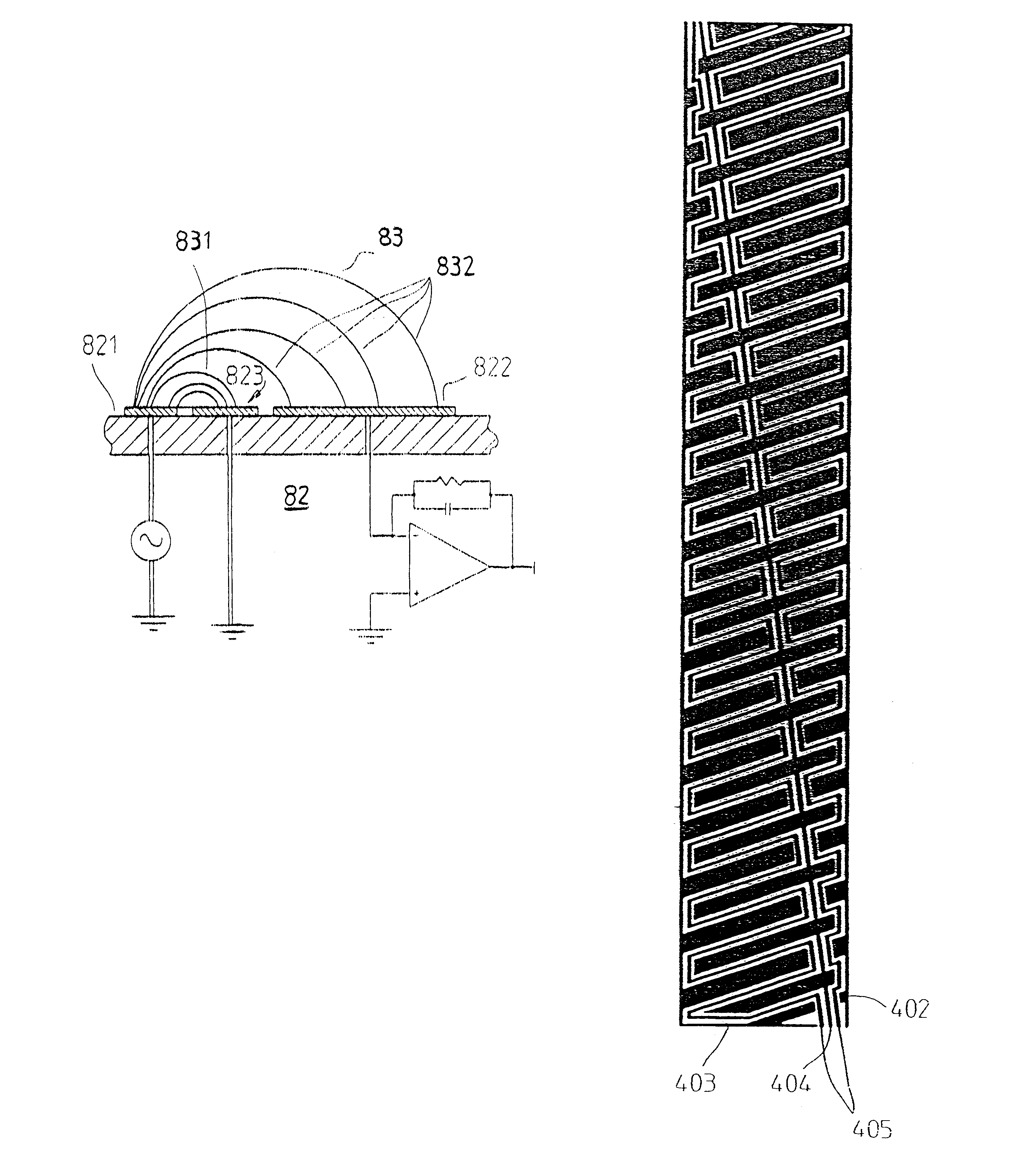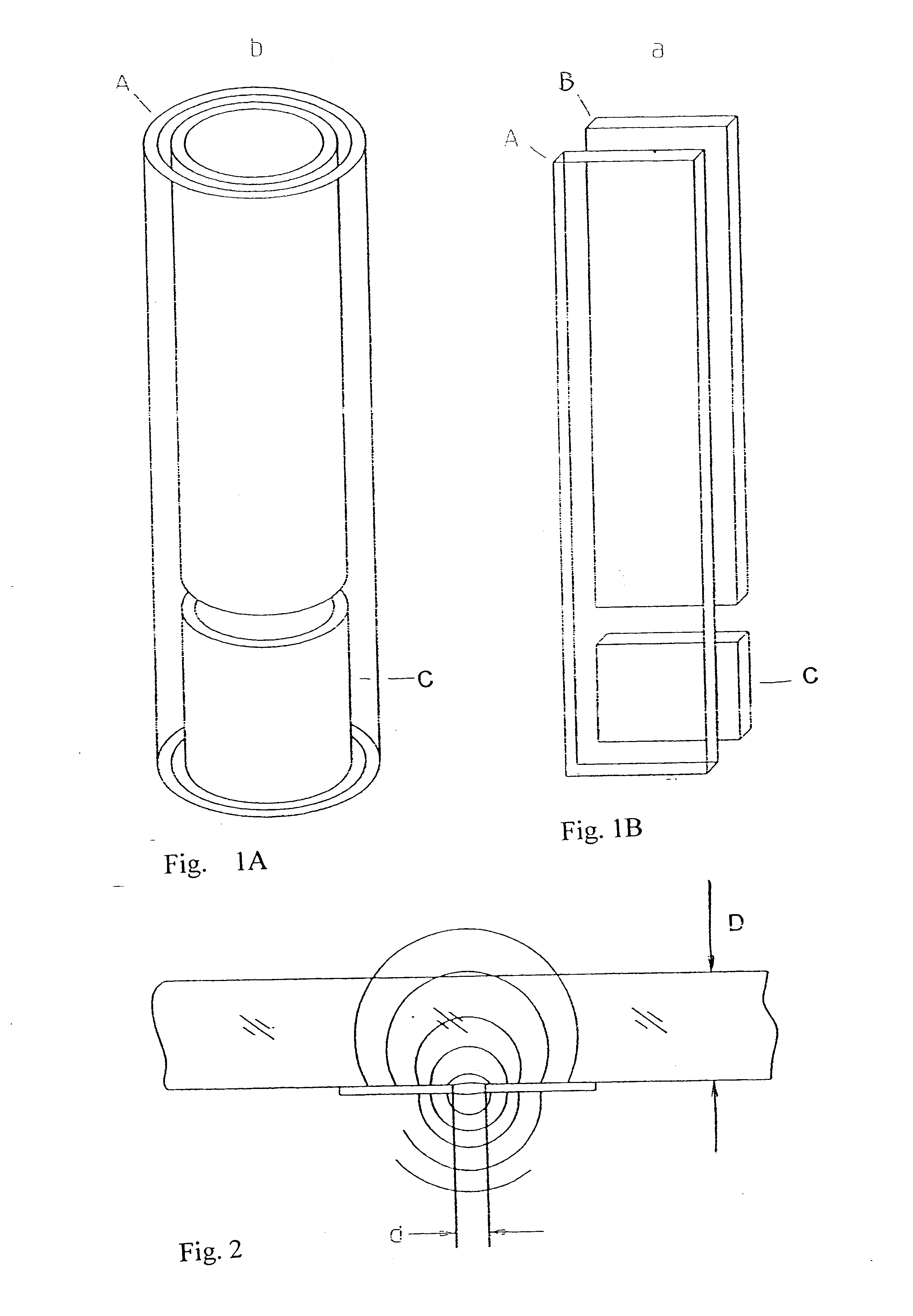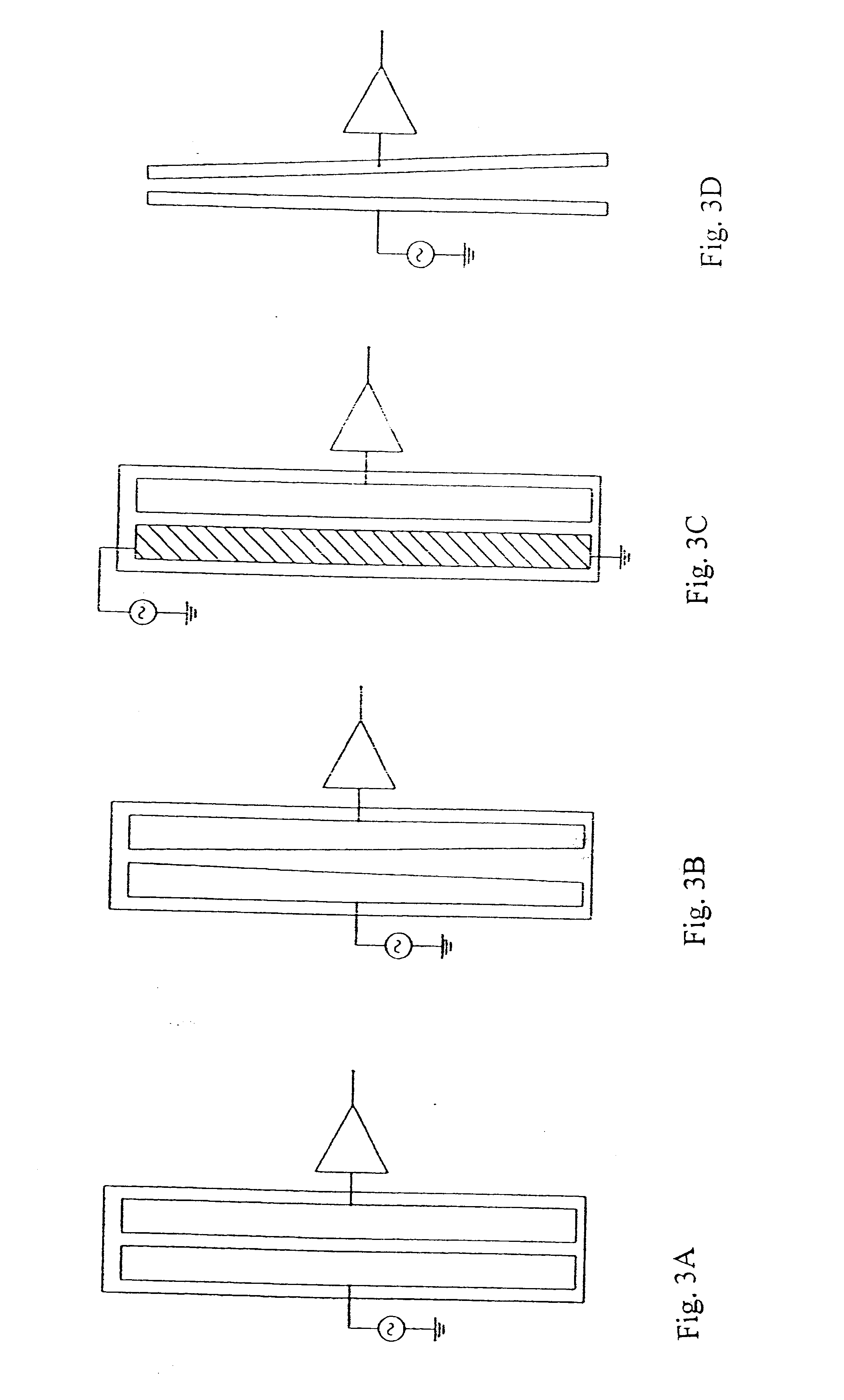Compensated capacitive liquid level sensor
a capacitive liquid level sensor and capacitive technology, applied in variable capacitors, instruments, machines/engines, etc., can solve the problems of non-uniform electric field that interacts with liquid, erroneous basic capacitive level sensor, and relatively complicated construction
- Summary
- Abstract
- Description
- Claims
- Application Information
AI Technical Summary
Problems solved by technology
Method used
Image
Examples
Embodiment Construction
Referring now to the drawings, a first implementation of the coplanar primary capacitor with the dependence f(h) is shown in FIG. 3B, where the plates are separated by a gap that is substantially inversely proportional to the height h, as a result the capacitance per unit height is linearly proportional to the height.
A second implementation of the primary capacitor is shown in FIG. 3C. In this implementation the separation between the two plates is constant, however, one plate is printed using a conductive ink with a relatively high resistivity such as carbon ink. The bottom of this plate is grounded and the excitation is applied to its top, the plate thus serves as a distributed voltage divider, and the excitation voltage applied to each elemental capacitance is proportional to its height, the capacitive current thus behaves similarly to the previous case.
A third implementation of the primary capacitor is shown in FIG. 3D. This configuration is similar to the one in FIG. 3B in that...
PUM
 Login to View More
Login to View More Abstract
Description
Claims
Application Information
 Login to View More
Login to View More - R&D
- Intellectual Property
- Life Sciences
- Materials
- Tech Scout
- Unparalleled Data Quality
- Higher Quality Content
- 60% Fewer Hallucinations
Browse by: Latest US Patents, China's latest patents, Technical Efficacy Thesaurus, Application Domain, Technology Topic, Popular Technical Reports.
© 2025 PatSnap. All rights reserved.Legal|Privacy policy|Modern Slavery Act Transparency Statement|Sitemap|About US| Contact US: help@patsnap.com



